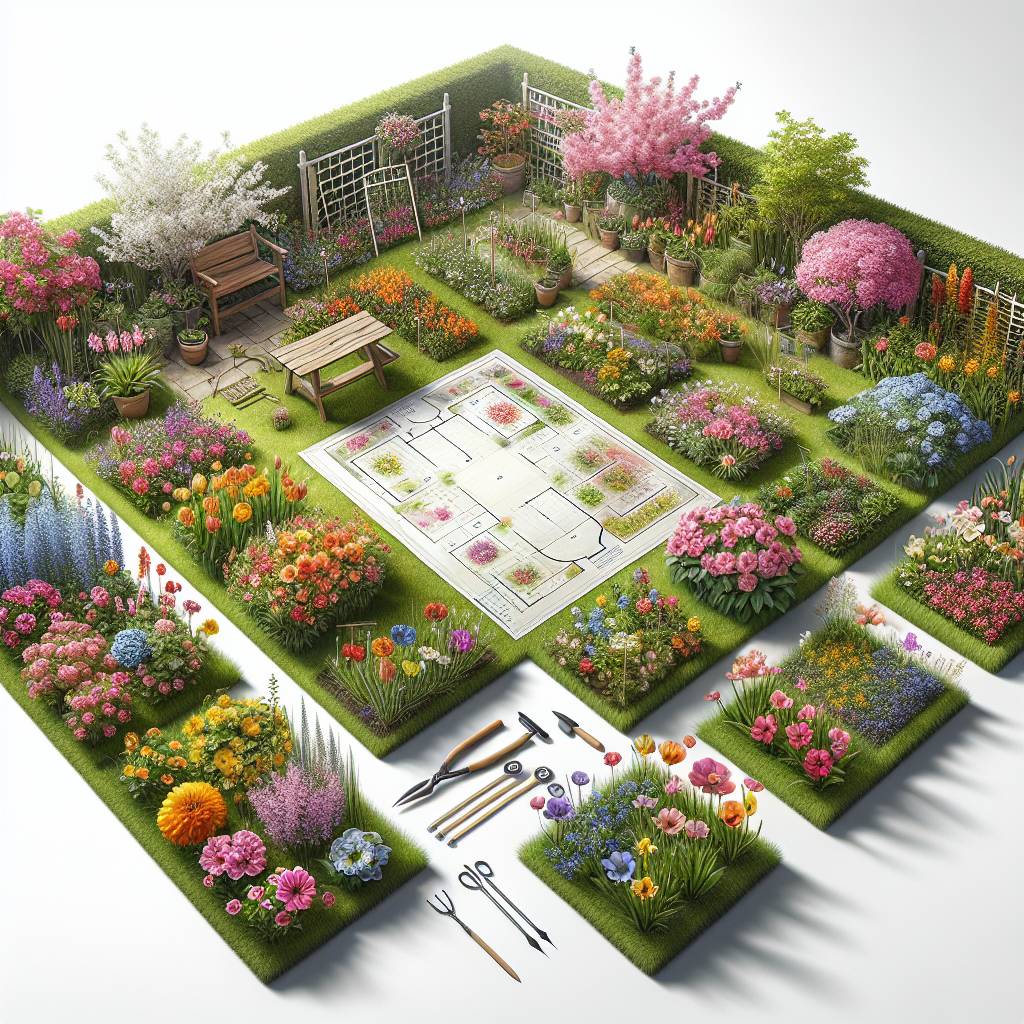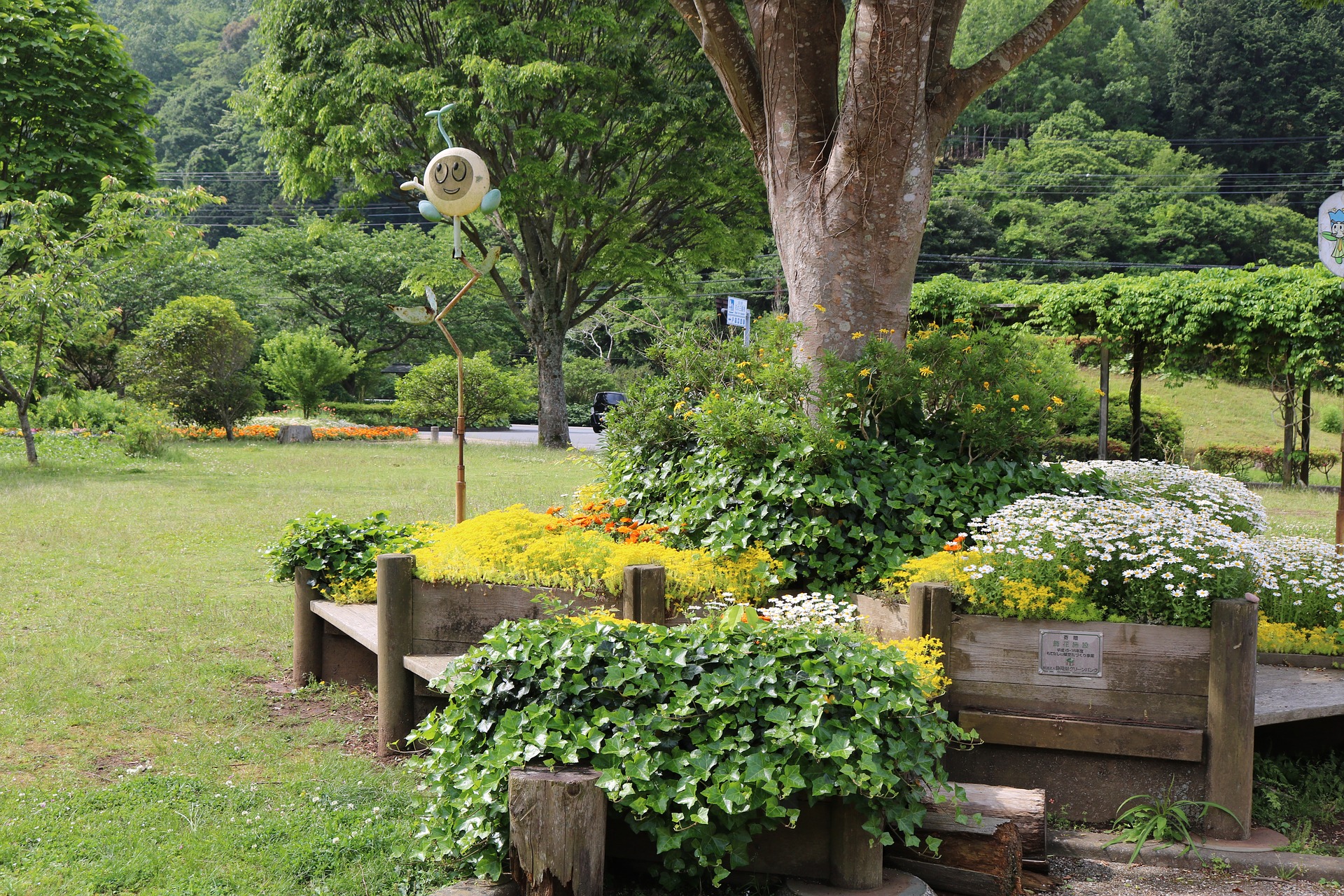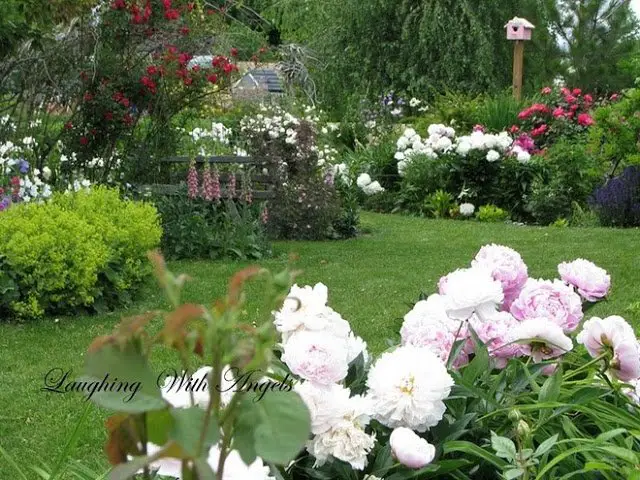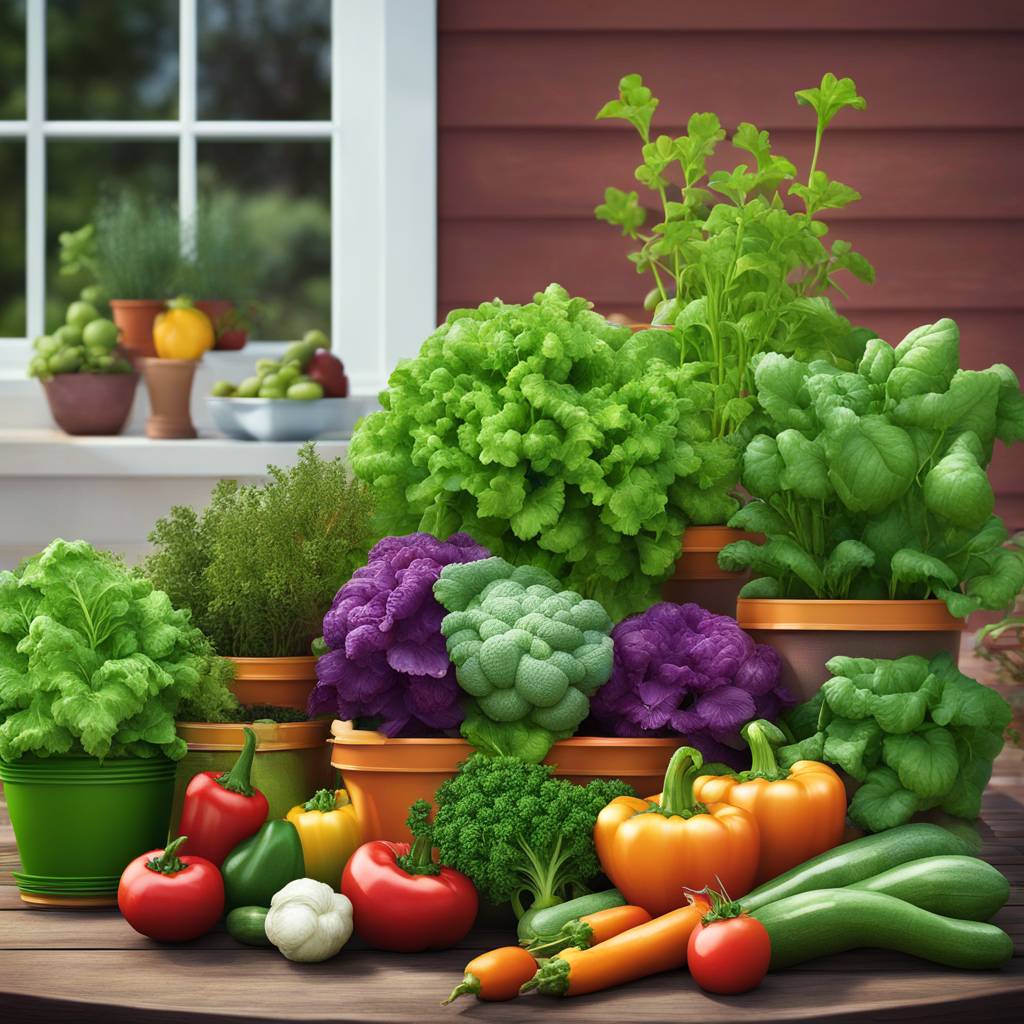Dive into the vibrant world of spring flower gardening for beginners! Whether you’re a green thumb or just starting, this guide will help you bloom like a pro in no time. From selecting the perfect blooms to mastering basic care tips, we’ve got you covered. Say goodbye to wilting woes and hello to blossoming beauty with our easy-to-follow advice.
Unearth the secrets of successful gardening with mulch, cover, food, and much water and watch your garden transform from drab to fab. With simple steps and expert guidance, you’ll soon be cultivating colorful blooms that rival even the most seasoned gardeners. Get ready to unleash your inner gardener and let your creativity blossom this spring!
Key Takeaways
- Start Small: Begin with a few easy-to-grow flower types to gain confidence in your gardening skills.
- Know Your Soil: Understand the soil and sunlight needs of different flowers to ensure they thrive in your garden.
- Consistent Care: Regular watering, weeding, and pruning are essential for maintaining a healthy and beautiful garden.
- Personalize Your Space: Add special features like bird feeders or decorative stones to make your garden unique and inviting.
- Stay Committed: Success in spring flower gardening requires dedication and ongoing maintenance to enjoy a vibrant garden all season.
- Learn from Mistakes: Embrace failures as learning opportunities, and adjust your approach for future gardening endeavors.
Understanding Flower Types
Perennials Basics
Perennials are plants that live for more than two years, returning annually. They offer a long-lasting investment in your garden, with popular choices like roses, lilies, and daisies. These flowers can withstand various weather conditions and require minimal maintenance.
Imagine them as the gift that keeps on giving; they bloom year after year without the need for replanting. Their ability to thrive continuously makes them an excellent choice for beginners looking to establish a stable garden foundation. Moreover, perennials often develop stronger root systems over time, aiding in soil stabilization, erosion prevention, and water retention.
Annuals Guide
Annuals complete their life cycle within one growing season before wilting away. These vibrant flowers add bursts of color to your garden and are perfect for creating seasonal displays. Popular annuals such as petunias, marigolds, and zinnias bring immediate beauty but require replanting each year.
Annual flowers provide flexibility in changing your garden’s appearance yearly; you can experiment with different colors and varieties without long-term commitment. This variety allows newbies to explore preferences while learning about planting techniques suited to their specific location or climate.
Biennials Overview
Biennials have a unique two-year life cycle: foliage grows during the first year while flowering occurs in the second year before completing its lifecycle. Flowers like foxgloves, hollyhocks, and sweet William fall under this category. Biennial plants offer an exciting journey of anticipation; nurturing these plants through their initial growth phase leads up to a rewarding blooming season the following year.
Planning Your Garden
Garden Layout
When starting spring flower gardening for newbies, planning your garden layout is crucial. Consider sunlight exposure, soil conditions, and plant height when arranging your flowers. A well-designed layout ensures a beautiful and organized garden. For example, tall plants should be placed at the back to prevent shading smaller ones.
Another essential aspect is understanding your gardening zone. Each zone has specific temperature ranges affecting plant growth. Utilize the USDA Hardiness Zone Map to determine your zone accurately; this helps in selecting flowers suitable for your climate. Knowing your zone guides you in choosing plants that thrive best in your area’s conditions.
Gardening Zone
Supplies are necessary to kickstart spring flower gardening successfully as a newbie. Basic items like gardening gloves, a trowel, and pruning shears are essential tools to have on hand. Consider having compost or fertilizer, watering cans or hoses, and mulch ready before beginning planting activities.
Best Flowers for Beginners
Easy Perennials
If you’re new to spring flower gardening, starting with easy perennials like daylilies, coneflowers, or sedums is a great idea. These plants are low-maintenance and can adapt to different growing conditions easily. For beginners seeking beautiful flowers without much hassle, easy perennials are the way to go.
Planting these varieties will not only add color and vibrancy to your garden but also provide a sense of accomplishment as they thrive with minimal effort on your part. Imagine having stunning blooms enhancing your outdoor space effortlessly!
Annuals for Starters
For those just beginning their gardening journey, consider kickstarting it with annuals such as marigolds, pansies, or impatiens. These plants are forgiving and resilient against various weather conditions, making them perfect for novice gardeners. Growing annuals allows beginners to play around with different colors and textures in their garden design.
Experimenting with annuals is an exciting opportunity to understand what works best in your garden while enjoying the process of nurturing these vibrant flowers into full bloom. The satisfaction of seeing your efforts translate into a colorful display is truly rewarding!
Early Bloomers
Introducing early blooming flowers like crocuses, daffodils, and tulips can bring life and beauty to your garden even before spring fully arrives. As a beginner in flower gardening, planting these species ensures that you have a burst of color as winter fades away and nature awakens once again.
Watching these early bloomers emerge from the soil signals the start of warmer days ahead—a promise of more blooms and growth in your flourishing garden.
Soil and Sun Requirements
Soil Prep
Preparing the soil for spring flower gardening for newbies is crucial. Remove weeds to prevent competition with your flowers. Loosen the soil to allow roots to grow easily. Amending the soil with organic matter like compost enriches it with nutrients essential for plant growth. Well-prepared soil also improves drainage, preventing waterlogging that can harm your flowers.
Organic matter such as peat moss can help retain moisture in the soil, ensuring a healthy environment for your plants. When you provide nutrient-rich soil, you set a strong foundation for vibrant and flourishing spring blooms.
Sunlight Needs
Understanding sunlight requirements is key when starting spring flower gardening as a beginner. Some plants, like sunflowers or marigolds, thrive in full sun exposure throughout the day. Others, such as impatiens or begonias, prefer partial shade where they receive some sunlight but are protected from intense heat.
Consider observing your garden’s sunlight patterns throughout the day before deciding on which flowers to plant. By matching your flowers’ sunlight needs with your garden’s conditions, you ensure their success and promote healthy growth.
Planting Basics
Spacing Flowers
When planting spring flower gardens, it’s crucial to consider the spacing between each plant. Adequate spacing allows room for growth, preventing competition for nutrients. It is advisable to adhere to the recommended guidelines on seed packets or plant labels for optimal results. Proper spacing also promotes better air circulation around plants, reducing the risk of diseases that can harm your garden.
To ensure healthy development, newbies should prioritize consistent watering practices when tending to their flower garden. Deep watering at intervals encourages roots to grow deeply into the soil, promoting stability and resilience in plants. Overwatering must be avoided as it can lead to root rot and other water-related issues that may hinder plant growth and overall health.
Watering Tips
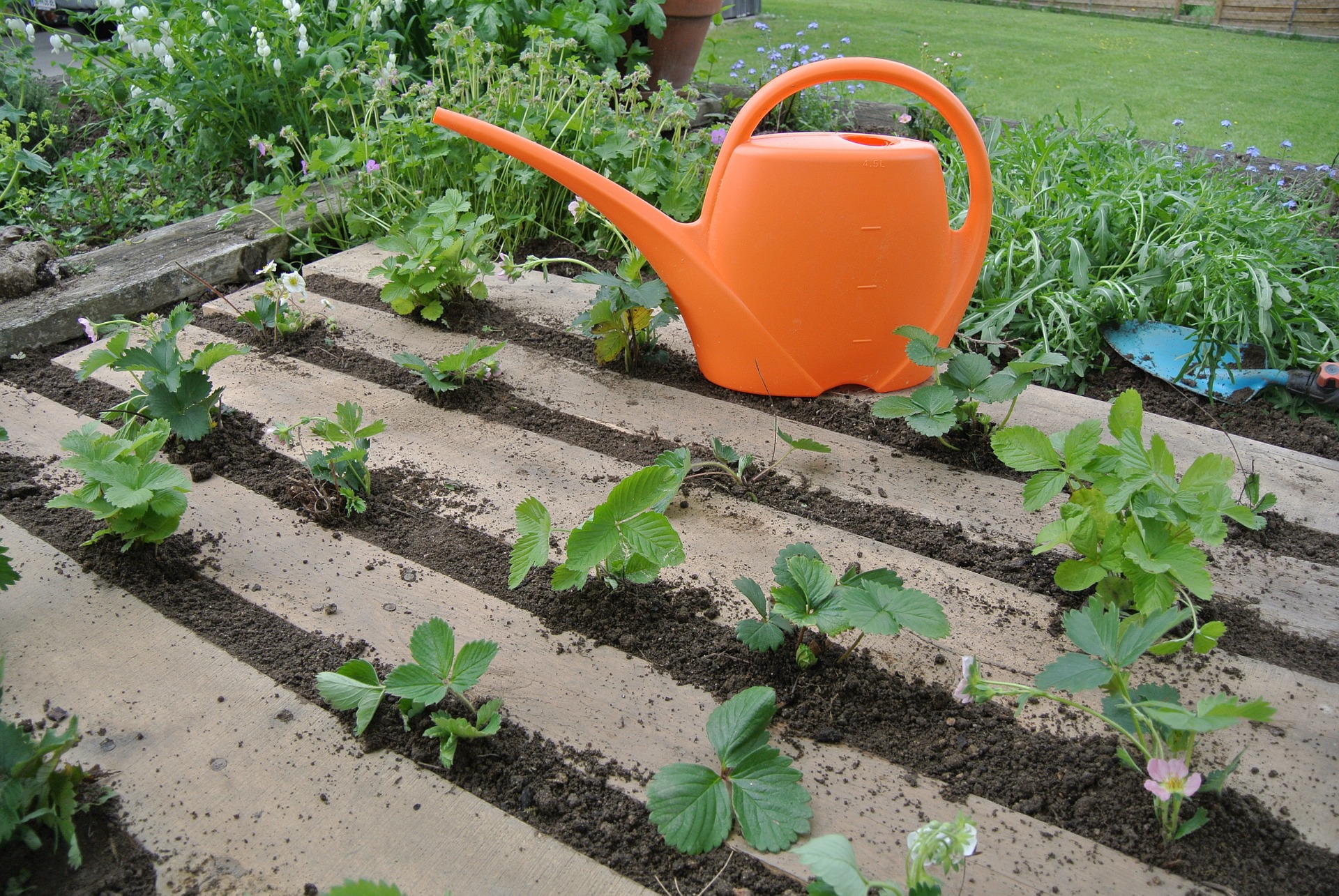
For those venturing into spring flower gardening, fertilizing plays a vital role in providing essential nutrients for robust growth and vibrant blooms. Opt for a balanced fertilizer suited to your specific flowers’ needs, following application instructions carefully. To support optimal nutrition throughout the growing season, apply fertilizers strategically at key stages of your plants’ development.
Caring for Your Garden
Seasonal Care
Taking care of your spring flower gardening for newbies means understanding the needs of your plants throughout the year. Different seasons call for specific attention to ensure your flowers thrive. Regularly prune and deadhead your plants to encourage new growth and remove old blooms that can hinder development. This practice helps maintain the health and appearance of your garden.
During extreme weather conditions, such as intense heat or frost, it’s crucial to protect your flowers from harm. Mother nature can be unpredictable, so safeguarding your garden against harsh elements is essential for its well-being. Certain pests may be more active during specific seasons, posing a threat to your plants’ health. By staying vigilant and taking preventive measures like using organic pest control methods or physical barriers, you can keep these threats at bay.
Protecting Flowers
Ensuring the longevity of your garden involves protecting it from potential threats like pests and diseases. Implementing strategies such as using neem oil or companion planting can help deter harmful insects without resorting to harsh chemicals that may harm beneficial organisms in the soil. By choosing natural solutions, you promote a healthy ecosystem within your garden while safeguarding your flowers.
Regularly inspecting your plants is vital in catching early signs of disease or infestation before they spread throughout the garden. By being proactive in monitoring plant health, you can address issues promptly and prevent them from escalating into larger problems that could damage all of your hard work.
Special Garden Features
Flowering Shrubs
Flowering shrubs are a fantastic addition to your garden, providing height, structure, and beauty. They can enhance the overall aesthetic of your outdoor space. Popular choices like hydrangeas, azaleas, and lilacs offer vibrant blooms and varying foliage textures. By incorporating these shrubs into your flower garden, you ensure year-round interest with their changing colors throughout the seasons.
These shrubs require minimal maintenance once established in your garden. Their sturdy nature makes them ideal for newbies as they are generally easy to care for. Flowering shrubs attract beneficial insects like bees and butterflies, contributing to a healthy ecosystem within your garden environment.
Pros:
- Add height and structure
- Provide year-round interest
- Easy maintenance for beginners
Cons:
- Some varieties may require specific pruning techniques
- Initial planting may need more attention than mature plants
Crocus Lawn
Creating a crocus lawn is an excellent way to introduce early spring color into your outdoor space. These vibrant flowers peek through the grass, signaling the arrival of spring. When selecting an area in your lawn for crocuses, ensure it has well-drained soil and receives adequate sunlight for optimal growth conditions.
Naturalizing crocuses involves scattering bulbs randomly across the chosen area or creating patterns if you prefer a more organized look in your lawn design. This simple yet effective technique can transform an ordinary lawn into a breathtaking display of colors during early spring when most other plants have yet to bloom.
Key Information:
- Choose well-drained soil with sunlight exposure
- Scatter bulbs randomly or create patterns
- Examples:
- A mix of purple and white crocuses scattered across the lawn creates a naturalized effect.
Spring Containers
For those with limited gardening space or looking to add floral accents on patios or balconies, planting flowers in containers is an ideal solution. Selecting spring-blooming flowers such as pansies, primroses, or violas allows you to enjoy vibrant displays even without a traditional flower bed.
When planting in containers, remember that proper drainage is crucial for plant health. Ensure that excess water can escape easily by using containers with drainage holes at the bottom while also choosing pots that complement your outdoor decor style seamlessly.
Maintenance and Beauty
Landscape Year-Round
Creating a visually appealing flower garden involves planning for year-round interest. Design your garden with plants that bloom at different times and have varied foliage colors. For example, you can incorporate evergreen shrubs, ornamental grasses, or perennials with attractive seed heads or winter foliage.
To ensure your flower garden looks beautiful throughout the year, it’s essential to have a well-thought-out landscape design. By including plants that offer visual interest in every season, you can enjoy a vibrant garden no matter the time of year.
- Design the garden with plants blooming at different times
- Include evergreen shrubs and ornamental grasses for variety
- Opt for perennials with attractive seed heads or winter foliage
Gardening Checklist
Crafting a gardening checklist is crucial for newbies to stay organized and not miss any important tasks in their flower gardens. Your checklist should encompass various activities such as soil preparation, starting seeds, setting watering schedules, and implementing pest control measures.
Having a structured gardening checklist will help you manage your spring flower garden efficiently by ensuring all necessary tasks are completed on time. This organization will contribute to the success of your gardening endeavors.
Secrets to Success
Plant Care Techniques
To ensure successful spring flower gardening for newbies, mastering plant care techniques is crucial. Practices like pruning, deadheading, staking, and dividing are essential for maintaining healthy plants. Regularly educating yourself on the specific care requirements of your flowers will help them thrive.
Consistent attention to plant care ensures optimal growth and blooming. For instance, deadheading spent blooms encourages continuous flowering. Similarly, proper pruning promotes new growth and enhances the overall health of the plants in your garden.
- Pruning
- Deadheading
- Staking
- Dividing
Maximizing Beauty
Achieving a beautiful flower garden involves more than just planting; it requires careful consideration of design elements. Incorporating color schemes, focal points, and texture contrasts can enhance the visual appeal of your garden significantly.
Experimenting with different combinations of flowers based on their colors and heights creates an aesthetically pleasing display in your garden. By varying heights and textures within your flower bed or borders, you can add depth and interest to the overall design.
Summary
You’ve learned the ins and outs of spring flower gardening for newbies. From understanding different flower types to planning your garden, selecting the best flowers, and mastering soil and sun requirements, you’re well on your way to creating a vibrant and beautiful garden. Remember, success lies in the details – from planting basics to caring for your garden and adding those special features that make it uniquely yours. Don’t forget about maintenance; it’s the key to keeping your garden looking its best all season long. Now armed with these secrets, get out there and start your gardening journey – the world of blooming possibilities awaits you!
Frequently Asked Questions
What are the different types of flowers suitable for beginners?
There are various flower types perfect for newbies like annuals (e.g., marigolds, zinnias), perennials (e.g., daylilies, coneflowers), and biennials (e.g., foxgloves). Choose based on your region’s climate and your gardening goals.
How can I plan my first spring flower garden effectively?
Start by understanding your garden space, sunlight exposure, soil quality. Sketch a layout to visualize plant placement. Consider color schemes and bloom times for a vibrant display throughout the season.
What are some easy-to-care-for flowers ideal for novice gardeners?
For beginners, low-maintenance flowers like pansies, petunias, sunflowers are excellent choices. They thrive with minimal effort and provide beautiful blooms to boost your confidence in gardening.
Why is it crucial to know soil and sun requirements before planting flowers?
Understanding soil pH, drainage needs, and sunlight preferences of plants ensures they receive the necessary nutrients and light levels for healthy growth. Matching these requirements will help your flowers flourish abundantly.
How should I maintain my spring flower garden to keep it looking beautiful?
Regular tasks such as watering consistently but not excessively, deadheading spent blooms, weeding regularly, fertilizing appropriately will help maintain the beauty of your garden. Observing plant health indicators like yellowing leaves can guide maintenance efforts effectively.
